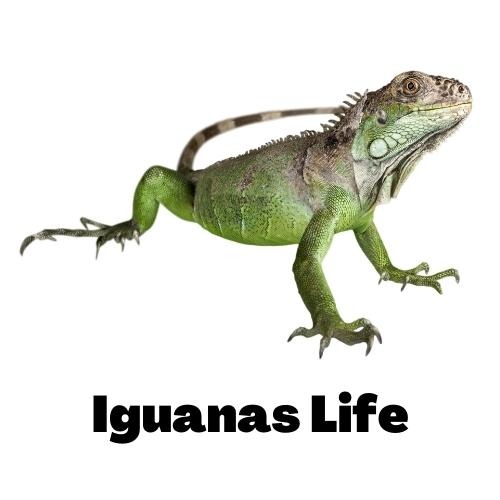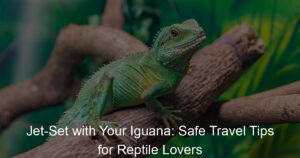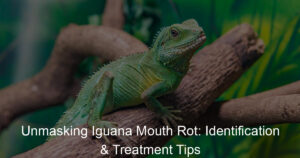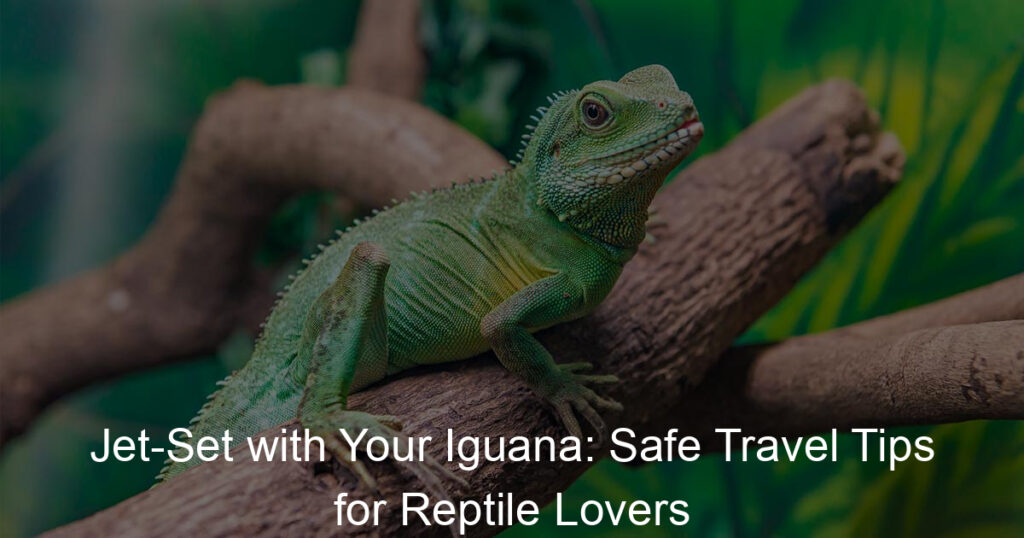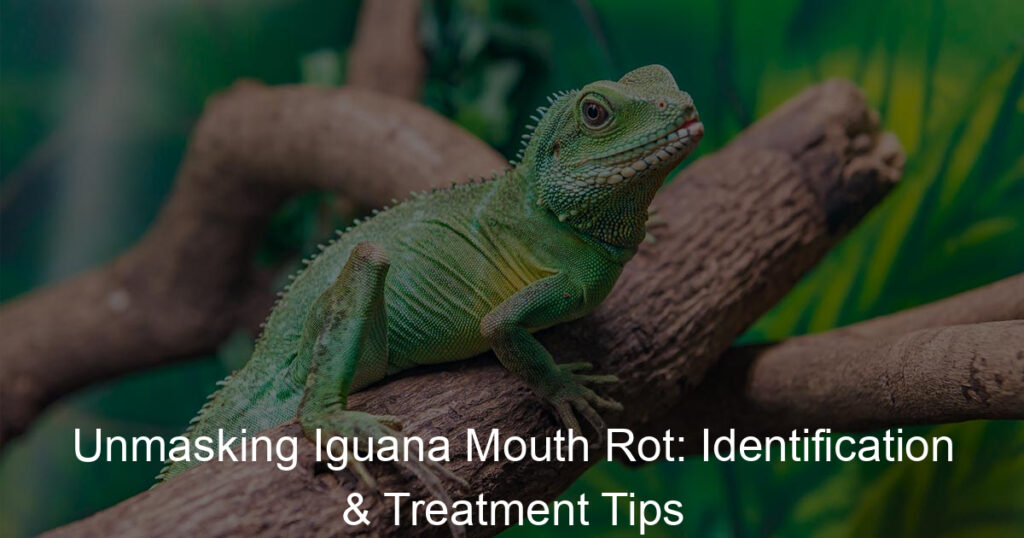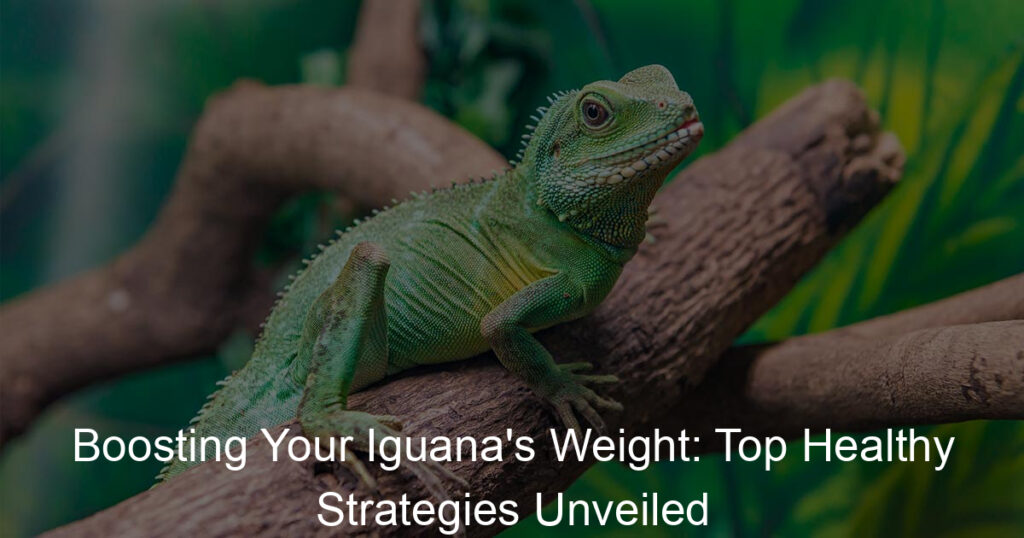Maintaining a healthy and active lifestyle for your blue iguana is not as difficult as it may seem. With proper care and attention, your blue iguana can live a long and happy life as your family pet. Read on for tips on how to best take care of your new reptilian friend.
What is the ideal habitat for blue iguanas in captivity?
Captive blue iguanas need an environment that resembles or mimics the natural habitat they’d have in the wild. To create their ideal habitat, you need a temperature ranging from 73-80 degrees Fahrenheit, high humidity of 80%, various plants, and hiding spots to provide shade throughout the day.
It’s also important to create multiple levels of height in their enclosure to encourage activity; this could range from tall branches and platforms to allow them to climb and bask when desired. Proper lighting is crucial for Vitamin D3 synthesis and should include either five full-spectrum bulbs or two UVB reptile lights with a basking spot lamp – all bulbs must be regulated by a thermostat-connected light timer.
Having plenty of substrates helps regulate the humidity inside your iguana’s enclosure and provides comfort while moving around their home. As long as you keep these essentials in mind while setting up an enclosure for your blue iguana, your little scaly friend is sure to thrive!
What should I feed my blue iguana, and how often?
Taking care of a blue iguana can be a rewarding experience, but it does require dedication. Blue iguanas need to have proper nutrition for them to live a long and healthy life. Many pet stores offer feed specifically designed for iguanas that should provide the animal with all its necessary nutrients, but you can also supplement this food with treats and fruits like tomatoes, squash, and collard greens.
When it comes to feeding your blue iguana, keep in mind that young iguanas should have meals twice a day while adults usually need only one meal every day or two. Additionally, make sure you provide your furry friend with plenty of fresh water each day so they stay hydrated!
How do I create a basking area for my blue iguana?
Creating a basking area for your blue iguana is important to ensure they stay healthy and happy. To make sure they have a comfortable space to thrive, dedicate an area of their habitat that has easy access to the light they need.
Make sure the spot you select is at least two times as warm as their normal habitat temperature, so use basking lamps or bulbs to heat it. Don’t forget to provide plenty of branches and rocks for them to climb—blue iguanas love vertical space and sunshine.
This area should also be well-ventilated so that your iguana can cool down if necessary. With all these considerations in mind, your iguana’s basking area will help them live their best life!
What is the proper way to handle a blue iguana?
The best way to handle a blue iguana is with care and respect – just like any other pet! Blue iguanas need to be kept in a warm, dry environment and should be monitored for temperature and humidity levels. They are surprisingly active for lizards, so it’s important to provide plenty of space for them to climb and explore.
When handling an iguana, it’s important not to move too quickly – these animals can get startled if handled too roughly. Be gentle with your iguana and never pull or drag them by their tail – this can cause permanent damage that could be detrimental to their health! If you’ve done your research and feel confident in your ability to care for a blue iguana, they can make rewarding pets.
How often should I clean my blue iguana’s enclosure?
Cleaning your blue iguana’s enclosure is an important part of keeping your pet happy and healthy, so be sure to stay on top of it. How often you need to do this will vary depending on the size of the enclosure, how many iguanas you have, and any other animals that live in the same space with them.
Generally speaking, if you are spot-cleaning every few days and fully deep dusting and disinfecting the enclosure at least once a week, then your iguana should be comfortable and content. If there are more than one or two iguanas housed together, however, then you may want to up the frequency of deep cleaning to bi-weekly or even weekly, just to be safe.
What are common health problems that affect blue iguanas, and how can they be treated?
Blue iguanas, a beautiful species of lizard, are becoming increasingly popular as pets. Like with any pet, however, owners need to recognize common health problems that may occur and be prepared to provide adequate veterinary care if needed.
One of the most common health issues facing blue iguanas is a metabolic bone disease (MBD), which can cause deformity of their skeletal system and leave them unable to move or eat properly. Fortunately, MBD is treatable with adequate calcium supplementation and exposure to the right lighting. As they are cold-blooded animals, iguanas should always have access to an area where they can warm up if needed.
A balanced diet is also very important! Owners should make sure that their iguana has plenty of access to greens as well as protein sources like crickets and worms. With such basic care and attention, blue iguanas are sure to thrive in a loving home environment!
Conclusion
Whether you decide to look after a baby blue iguana or an adult, you should always be prepared for the challenges that come with taking care of any pet. With the right amount of research, knowledge, and dedication any new pet owner can provide their reptilian fur-ball the care they need! Be sure to invest in a good tank size and give them plenty of space to roam. Always watch out for symptoms that may indicate your iguana isn’t feeling well like red discharge from the eyes or nose and focus on providing high-quality food appropriate for a blue iguana. No matter what age your iguana is, providing them with adequate warmth and humidity is vital to its health. It’s essential to remember these tips when caring for any pet as it can be an incredibly rewarding experience that you’ll cherish forever. So hopefully these few tips will inspire you on how to look after your new scaly friend!
